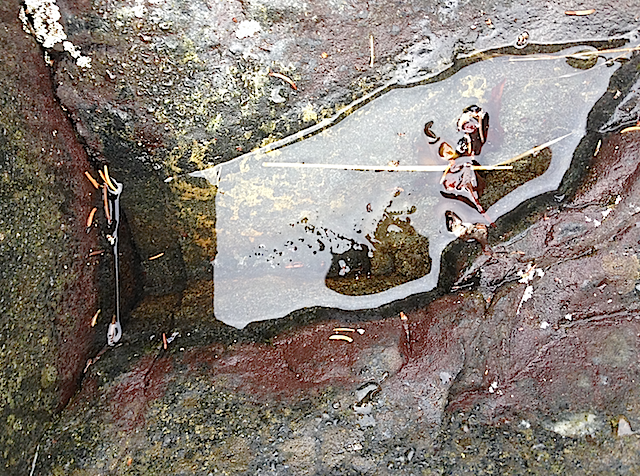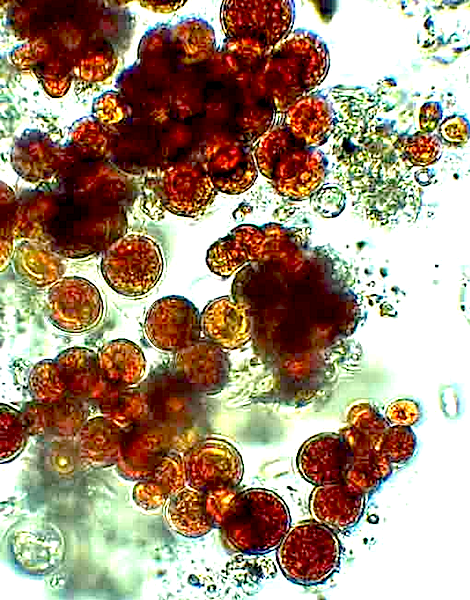This year we will introduce a new alga every month. Everything from the large brown algae such as the bladderwrack, ( Fucus vesiculosus ) and narrow wrack ( Fucus radicans ) who have been the theme in our research for many years (and will continue to emerge during the studies this year), to small microscopic algae that may not be so famous. We want to show you how exciting alga are and what good they do by producing oxygen and also which products we get from different alga species and what they can do.
The alga of January: Haematococcus pluvialis

In the small rock pools in the archipelago is often found a microscopic unicellular green alga. This alga, Haematococcus pluvialis , is called blood rain alga in Swedish and it is widely spread across Europe, Africa and North America. The latin name comes from the Greek word haema and Staphylococcus , which means blood and seed. pluvialis come from Latin and means rain.
They belong to the group of green algae and swim around by two thin flagella in the front side of the cell. In these small waterbodies of the rockpools, the environmental conditions vary quite a lot and blood rain algae can adapt and survive such different conditions as strong sunlight, drying out and freezing in winter, by forming special immobile resting spores with thick cell walls. The resting spores are filled with starch, fat, and astaxanthin, a red pigment. The spores become a sticky mass, forming a thin red film that sticks to the rock surface. When living conditions become better, for example, after a rain, the spores can transform and return to moving green algae.

Astaxanthin is a substance that protects the cell from degradation by free radicals, which attack the cell during different types of stress, e.g. when the cell is exposed to strong UV radiation. Blood rain alga is cultivated because of its high content of astaxanthin, which can protect the human body’s cells against free radicals and boost the immune system. Today we find astaxanthin in a number of products out on the market, including feed in salmon farming. The substance is for example vital to the salmon’s maturation and spawning and also helps protect against various diseases. Wild salmon ingest astaxanthin through their natural food, small crustaceans who have eaten algae.






